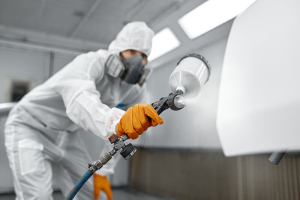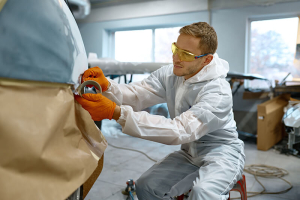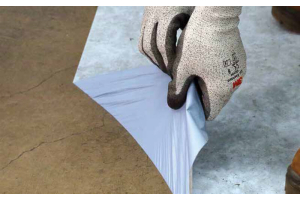How to Protect Healthcare & Pharma Professionals from Respiratory Risks
How to Protect Healthcare & Pharma Professionals from Respiratory Risks
In a healthcare or pharmaceutical environment, personnel are exposed daily to a wide range of airborne hazards, hazardous drugs and/or chemicals—all of which have the potential to present significant respiratory risks. Protecting these workers must be a high priority at any healthcare or pharmaceutical facility. Respiratory protection that’s safe and comfortable for employees, as well as compliant with state and federal administrations, requires a well-informed approach.
As organizations in the healthcare and pharmaceutical industry make decisions about the best ways to protect their teams from respiratory risks, a top consideration is choosing effective respirators and related equipment for the hazards at hand. Following are some essential insights and valuable information to help decision-makers in these environments carry out the process from a position of knowledge.
Evaluating Specific Respiratory Hazards in the Workplace
There is no one-size-fits-all solution for respiratory protection, as different facilities in the healthcare and pharmaceutical industry have different levels of exposure to various contaminants. Therefore, a crucial first step to identifying the right respiratory protection is assessing exposure. Depending on your organization’s specific purpose, processes and functions, you’re likely to find the following three areas to be the most common risks for contamination exposure.
- Airborne/clinical isolation areas and management of patients with confirmed infection or emerging diseases: Healthcare workers are exposed to respiratory hazards in various forms, mainly airborne inhalation and droplets from an infected person. These diseases, which respect no national boundaries, can challenge efforts to protect workers, as prevention and control recommendations may not be immediately available.
- Handling and administration of hazardous drugs (USP 800): Hazardous drugs can cause cancer, reproductive issues and damage to organs or DNA. Potential routes of exposure include absorption through the skin, inhalation of dusts, aerosols or vapors, accidental injection and unintentional ingestion. Some tasks that may run a higher risk of exposure include:
- Counting, crushing or breaking tablets
- Preparing, handling, administering and disposing of solutions
- Handling and disposing of drug administration equipment, contaminated waste and patient body fluids, feces and urine
- Cleaning up spills and/or contaminated bodily fluids
- Cleaning, disinfecting, drug neutralization chemical handling and use: Hospital Acquired Infections (HAI) are a common concern for healthcare organizations and the emergence of resistant microorganisms has made this an even greater challenge. Peracetic Acid (PAA) based products have proven to be relatively effective, while at the same time there are existing and emerging concerns regarding the respiratory hazards of these products. PAA and bleach are also the most frequently used chemotherapy drug neutralizing agents. As such, it is vital for respiratory protection providers to complete testing to ensure that certain gas/vapor cartridges for respirators can help organizations meet the challenge posed by the increased use of these products in healthcare.
Selecting Safe & Compliant Respiratory Protection
OSHA requires employers to evaluate respiratory hazards on a regular basis to determine exposure levels and effective control measures. With a complete assessment of the aforementioned risks on site, you can make an informed decision about which respirators will offer the protection your staff needs. Other factors that will impact the proper selection and use of respiratory protection for healthcare and pharmaceutical professionals include:
- Individual employee health considerations, such as medical conditions that may prohibit wearing a respirator
- Fit testing and training on usage to achieve maximum effectiveness
- Regular maintenance, storage and replacement of respiratory protection to help safeguard workers from hazards
- A written record of everything to help solve emerging issues before they become larger problems
- Limitation to products approved by the National Institute for Occupational Safety and Health (NIOSH), and identified by proper assigned protection factor (APF), which is the level of respiratory protection expected from a given class of respirators.
There are two main types of respirators available for use in healthcare and pharmaceutical settings:
- Disposable surgical respirators: N95 respirators are respiratory protective devices that when properly selected and used can provide a tight fit to create a seal between the face and respirator. They are lightweight, allow for ease of movement and communication, and filter 95% of particles when properly fitted.
- Powered air purifying respirators: PAPRs are battery-operated, reusable systems that can cover the full face and neck. When used correctly, the HEPA filter can filter 99.97% of particles. They're typically used in clinical or airborne isolation areas, and can also be used to help protect against airborne biological particles such as bacteria and viruses, or handling of hazardous drugs. These are USP 800 compliant when used with appropriate gas and vapor cartridges.
PAPR systems can offer respiratory protection with integrated head, eye and face protection that can help provide a more comfortable environment for healthcare and pharmaceutical professionals. They comprise the following basic components:
- Headtop: Different jobs call for different kinds of headtops to protect workers from hazardous environments. From hoods to helmets, choosing the right headtop requires consideration of your organization’s unique needs.
- Breathing tube: There is a range of breathing tubes that vary in length.
- Blower: The blower unit delivers filtered air to the system while also housing the battery, filter and filter cover. Be sure to review factors such as work environment and shift duration, then choose from the appropriate blower unit configuration that is right for your hazards.
Leveraging the Right PAPR System for Healthcare & Pharma
For settings in which PAPR options are ideal, healthcare and pharmaceutical organizations should opt for kits designed to help protect their workers without compromising comfort or flexibility. The all-in-one 3M™ Versaflo™ Healthcare Kit is a top choice for complete, ready-to-use HE PAPR systems, designed especially for the healthcare and pharmaceutical industry. These kits feature invaluable advantages like:
- Continuous airflow for improving comfort, especially over long periods of work
- Ease of assembly, disassembly and troubleshooting for maintenance and decontamination
- Lightweight nature
- Alarms for indicating low battery and low flow
- Intuitive user interface, with blue components representing user touch points
- Lightweight soft hoods designed to help reduce neck strain or fatigue by not wearing motor blower on head
- Comfortable fit for a wide variety of head sizes, and visors with a wide field of view
Because PAPR systems are battery operated, you must also consider battery charging stations. The TR-341N Battery Charger Kit is a complete single station battery charger for the 3M™ Versaflo™ Healthcare PAPR Kit TR-300, consisting of a TR-941N Power Supply and a TR-340 Cradle.
Options like these provide the necessary protection and support to healthcare and pharmaceutical professionals as a component of a formally developed and implemented written respiratory protection program.
For more information about how these products can optimally support your efforts to protect healthcare and pharmaceutical professionals from respiratory risks within your facility, visit our product page or reach out to our team of experts.










